|
Location Discovered |
Serbia, near Belgrade |
| Material
|
Copper Alloy (with gold gilding) |
|
Dimensions |
CREST
123mm (Overall Length)
1mm or < (Overall thickness)
15mm (circular section width)
7mm( width at tip)
18mm (width at top)
4mm (Silver rivet width)
CLIP
18mm wide
16mm long
6mm (Interior of loop
diameter) |
|
Roman Empire |
Late 4th, early 5th Century AD |
|
Description |
|
A complete bronze helmet crest for the "Intercisa II or IV" Roman helmet
or other similar later Roman helmet that allowed a crest to be attached.
This exceedingly rare complete example consists of a fully gilded
attaching crest, along with the mounting hardware and silver rivets.
The piece is wider at the top narrowing to the center circular image which
is that of a CHI-RHO (explained further below). A narrow portion
then continues further down to the end point. The piece still has
large sections that are covered in a gold foil. The items patina is
not present, but this is likely as a result of over cleaning or more
likely as a result of being preserved in a oxygen depleted environment
which did not allow it to corrode.
The mounting hardware is amazing, and almost identically matches the
drawings from Christian Miks book(4) pages 52-54, in which the clip at the
top attaches to the crest of the helmet, while the rivet at the bottom
attaches to the ridge of the helmet. The fact that the rivets were
done in silver indicates that they likely matched other silver rivets on
the gilded helmet.
The symbol at the center of the piece is called the CHI-RHO. (*this
item also has a star and crescent moon in
the field*)
The symbol consists of the superimposed Greek letters chi (Χ) and rho (Ρ)
and although commonly connected to Christianity in its earliest form, the
symbol also was used prior to Christianity.
What really defines this symbol however is the belief that it was first
used by the great Roman Emperor Constantine I (The Great) at the battle of
Melvin Bridge on October 28th, 312 AD. According to one of the
sources, Eusebius of Caesarea, Constantine had a vision in which the
superimposed letters appeared to him accompanied by the words ‘in this you
shall conquer’. A second contemporary source Lactantius, states that
Constantine was also instructed to place the symbol on the shields of all
his soldiers prior to the battle. History records that this is what he in
fact did, and that the result of the ensuing battle was a decisive victory
to Constantine and his troops. Constantine later went on to convert
to Christianity on his deathbed, forever changing the course of history as
the first Christian Roman Emperor.
Many coins of the period begin to display this symbol on the Military
standard and it is consistently displayed on Christian inscriptions.
The item is extremely rare, and it was not until more recently that these
items were properly identified. Previous thoughts had been that they
were for belts, or other items. However the published works of Jelle
Prins in 1998 confirmed that these pieces were actually the helmet crest
for the Intercisa II or IV Roman helmets.
The portions of a one of these helmets, along with some silver gilt
sheathing was located in the Limburg Province of the Netherlands in the
later 90's. The helmet crest still had the bronze attachment on it
at the front, with a Chi-Rho emblem engraved on it (very similar to this
piece). (1)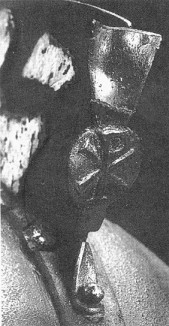 (2)(3)(4) (2)(3)(4)
Click on
Pictures for higher resolution
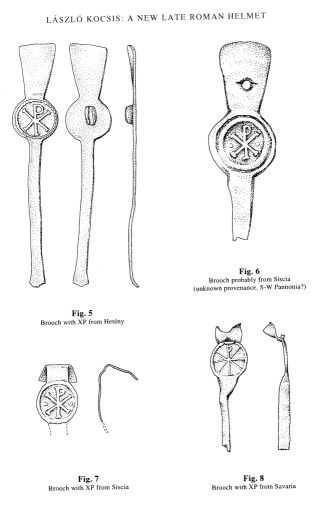
Other known examples(1) |
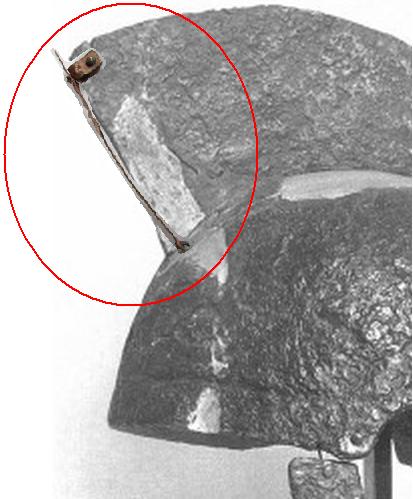
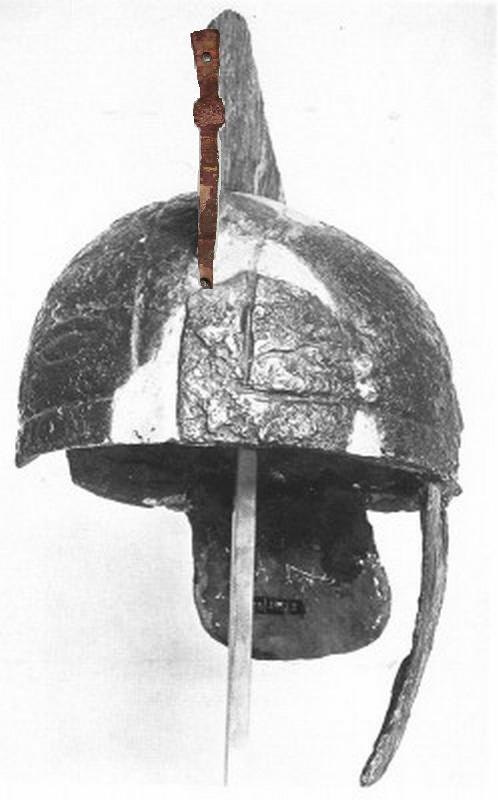
Helmet Example with
artifact superimposed where it would have been |
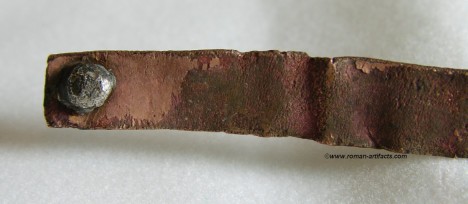
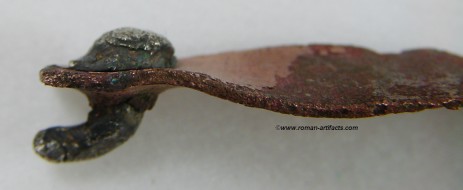 |
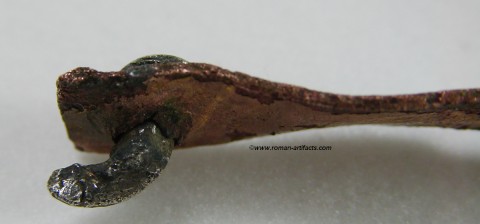
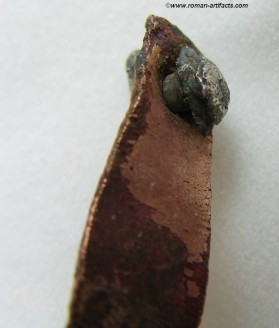 |
|
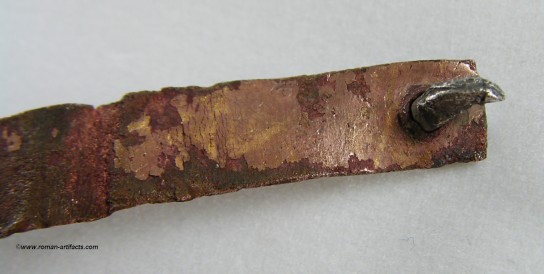
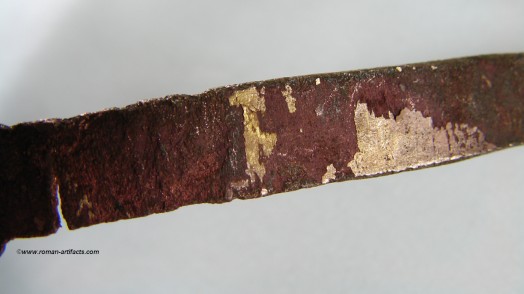 |
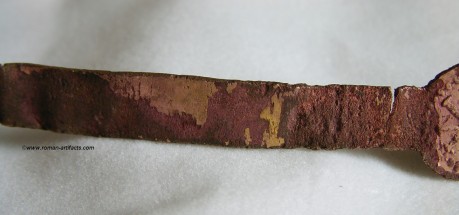
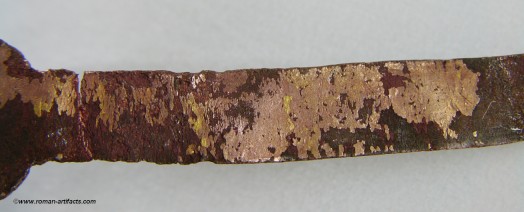 |
| 